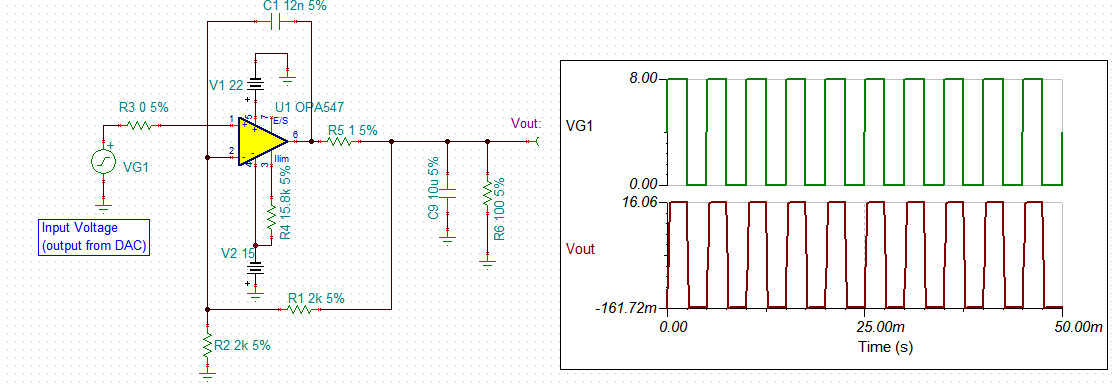Other Parts Discussed in Thread: TINA-TI
Hi All,
I am using OPA547 to generate a voltage source using a DAC. My DAC feeds a voltage to OPA547 which is currently used in non-inverting configuration. OPA547 multiplies it with a fixed gain and gives the output voltage.
I read some application notes which mention about how OPAMP stability gets affected by capacitive load. They mention about using a resistor in series at the OPA547 output to improve stability of the overall system.
I would like to understand should i keep the circuit same or should i change the OPA547 to an inverting configuration.
It will be good if someone can answer the following questions,
- Does capacitive load affect both inverting and non-inverting configuration OPAMP in the same way?
- Which configuration is preferred for better stability and less heat dissipation from the OPAMP?
- Will changing my circuit to an inverting configuration improve overall stability?
- How effective is adding a series resistor at output of OPA547 in improving stability?
- How do i arrive at the right value of series resistor for my circuit?
Regards
Ayusman


